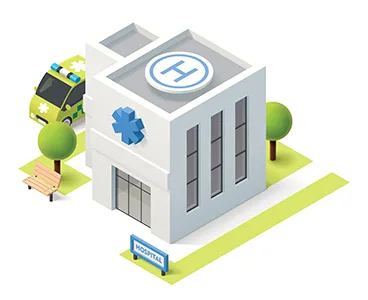Tidal Wave

By Ibby Smith Stofer
Swimming in churning waters can either sink you or make you stronger!
The healthcare waters are churning, the rapids of change are swirling, and the challenge is to conquer the storm and reach the other side a stronger partner or provider dedicated to making a difference in how America’s healthcare is provided.
Today the changes facing all healthcare participants are daunting. Newly insured patients, healthcare exchanges, regulations, reductions in reimbursement, shifts to pay for performance or patient satisfaction ratings, transparency of prices, ACOs, regional GPOs, and coalitions all influence both providers and suppliers. Moreover, all seem to have emerged at the same time, sometimes colliding and definitely creating what feels like a tidal wave of changes.
The traditional service paths of both providers and suppliers are requiring new processes and approaches in order to survive and succeed in this new environment. No more can any healthcare facility simply rely on patient proximity, loyalty or physician referrals as the road to revenues and success. Nor can a manufacturer or its representative rely on customer familiarity, product features, benefits and qualities as the keys to acceptance by the healthcare providers.
As long as patient satisfaction scoring, emphasis on eliminating hospital acquired issues, and readmissions continue to be both elevated and spotlighted, manufacturers need to assist their healthcare customers in addressing these issues with meaningful value. How will a ventilator, bedside monitor or infusion device help address these or similar concerns? What about the multitude of other devices utilized in patient care? Do all of these items need to justify their impact on patient satisfaction? Certainly band-aids and aspirin have proven their value and are among the lowest cost items used in many healthcare settings. But manufacturers have to rethink how higher technology provides and demonstrates value to the customer, even the technology which has been in the market for years and is considered by many to be a routine tool for patient care.
Today, the sales and marketing efforts of most major manufacturers of medical devices have had to align their messaging with the goals and challenges of the providers. They need to understand the executive direction being taken to meet the emphasis on Hospital Consumer Assessment of Healthcare Providers and Systems (HCAHPS) as well as ways to manage costs, reduce admissions and aid the healthcare provider in attracting both patients and physicians. They also need to offer services as well as products that can be utilized in non-acute care settings with appropriate training and support for these new care settings. Identifying how to reduce costs is not new; however, identifying how a product or service can help reduce readmissions, attract new patients or physicians, or have impact on patient and clinician satisfaction is new.
Wow! That puts a new face on the market for some very common devices. Again we ask, can an infusion device, ventilator or monitor affect any of these challenges? Rethinking these impacts may be a strong differentiator for a company. Designs for patient comfort, abilities to interface with other devices and fewer nuisance alarms, simple-to-understand messages and monitor screens and/or the ability to share data with physicians or other networks, are among some of the newer messaging capabilities and designs being promoted by various companies.
From my experience, many medical device manufacturers focused exclusively on the acute care setting, developing their sales and marketing efforts to serve that market. Many utilized distributors or independent reps to serve the sub acute and home care market, or did nothing at all in that regard.

Today, the hospital is much more than the large building with a blue “H” sign directing you there. It includes the traditional hospital, the clinics and surgery centers, as well as nursing homes, in-home care, and often retail wellness centers. As a manufacturer or service provider it is important that we develop new ways to serve this expanded customer profile. Inpatient days of care have been declining and the hospital provider has incorporated a broader range of care sites in order to address the needs of its community as well as to sustain its revenue base. As higher deductible plans continue to gain in popularity, the use of alternate care sites at lower costs will continue to be attractive to both hospital executives and patients.
So how do the manufacturers and service providers best serve this customer profile? That is the question many marketing and sales executives across the country are wrestling with today. Not unlike the time of the emergence of the IDN concept, the go-to market sales and marketing messages and structures will need to change. Whether it will be direct sales reps, independent reps, distributors or the internet it will require a deep drill of the existing acute care customers’ goals and plans.
Can your local rep meet all the needs of the diverse landscape? Will your credit department be prepared as well? Is your design and training suitable for the freestanding clinic or home user? Do we need to expand or refocus our direct sales efforts and resources?
Without seeking input from the center of the changing patient care environment, companies may invest both resources and effort and not meet the new needs. It is critical to ask the executive leadership about their plans, challenges and needs. Assumption will not work; informed feedback needs to be communicated to the medical device and service companies through their representatives as well as detailed research into the changes going on in the healthcare environment.
It is important to demonstrate a desire to meet the evolving needs, and most acute care executives know where they are heading and in general there will be a common trail. Yes, there may be some outliers but generally we should be able to see the emerging patterns and be ready to serve them as well if not better than we have served our acute care customers.
So, if you have not done so already, begin to ask strategic questions centered on how your customer is planning to meet the changing requirements and demands for healthcare services outside the halls of the existing hospital. Ask specifically how they see your product or service assisting them in their mission. Then use that data to aid your company in expanding its services to align and assist in these changes. Your customer may still be the hospital and they may continue to use your product or service, but you need to be prepared to answer how you can help them to respond to the regulatory and cost pressures as well as the focus on wellness and not just disease treatment.
If you are a sales person, or if you are an acute care professional facing all this turmoil we would welcome your feedback and comments as we learn best from each other and sharing allows us to see things through others eyes.
